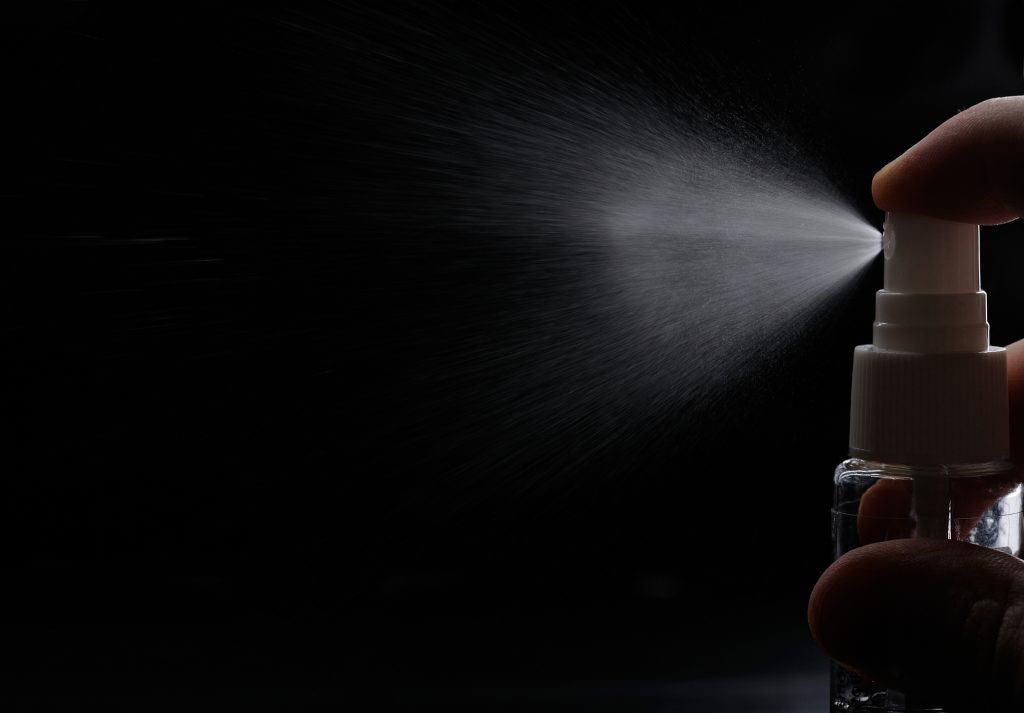Ever smelt a wonderful whiff from that mysterious stranger from the other side of the dance floor? A magnificent musk emanating from that handsome new coworker from across the office? Or, on the flip side, have you ever felt your nostrils being violated by the choking cloud of Dior Sauvage off that pesky “cologne guy”?
If so, then you’ve experienced one of the three characteristics of a perfume’s performance: “projection”.
Fragrance moves, or projects, through the air due to the scientific phenomenon known as diffusion. Diffusion dictates that particles will move from an area of high concentration (the area where the perfume was applied) to an area of low concentration (the surrounding air).
Let’s take a closer look at the science behind diffusion and projection.
What Is Projection?

“Projection” in the perfume world refers to one of the three principal axes upon which a perfume’s overall “performance” is judged.
“Longevity” refers to the amount of time a perfume is detectable on skin or fabric, and “sillage” refers to the scent trail that a perfume leaves in the air behind you – more about that here, if you’re interested.
“Projection” is similar to sillage, but not exactly the same. It’s entirely possible to have a perfume with low sillage and high projection, or high sillage and low projection.
A perfume’s projection is its capacity to be smelled away from the wearer. A perfume with low projection, for example, would not be detectable beyond immediate contact with the wearer, remaining close to the skin. A perfume with high projection, on the other hand, would announce its presence before the wearer has even entered the room.
If sillage is a trail that is left behind the wearer, projection is kind of like the forcefield of scent that cocoons the wearer from all sides. The higher the projection, the bigger the forcefield.
But why do perfumes project? What’s the science behind it? And why do some perfumes project more than others?
It all comes down to a little something called diffusion.
What Is Diffusion?

Diffusion is a scientific phenomenon that you probably learned about in your high school biology or chemistry classes.
In the simplest terms, diffusion refers to the movement of things – whether those things be fragrance molecules, atoms, or even people – from an area of high concentration to an area of lower concentration.
Think about it this way. Take a glass of water and drop a few splotches of food coloring in it. At first, the food coloring will writhe about in a great cloud, a shapeless amoeba of morphing color. But in a few moments, that cloud of color moves throughout the glass, gradually dispersing itself through the gradient of the water, until the cloud is gone, having been totally subsumed into the water.
The food coloring molecules migrated from an area of high concentration – the initial impact site of the food coloring into the water – to an area of lower concentration, i.e. the rest of the glass of water.
How Does That Work In Perfume?
This phenomenon works in the same way in perfumes as it does in a glass of water.
When you first spray on your perfume, the fragrance molecules are highly concentrated in the area of skin or fabric on which you sprayed. Following the theory of diffusion, the molecules begin dispersing away from the initial area of high concentration and into the air around you, the wearer, an area of lower concentration.
They’re aided in their migration by the alcohol present in the perfume (unless you’re dealing with an oil-based fragrance, of course). Alcohol is a highly volatile substance which evaporates very quickly when exposed to heat or pressure.
Naturally, when alcohol evaporates, it diffuses into the air, taking with it the fragrance molecules chomping at the bit to move to an area of lower concentration, and delivering those fragrance-charged molecules to your nose and the noses of the people around you.
Why Do Some Perfumes Project More Than Others?
The answer to this question comes down to an entirely different sort of concentration – perfume concentration, to be precise. I’ve written about this topic before, so if you’re looking for a more in depth explanation, feel free to follow the link.
I’ll keep my spiel a bit more brief here.
Basically, perfume concentration refers to the amount of perfume oils present in a formulation. The higher the concentration, the more perfume oils, and the lower the concentration, the less perfume oils.
There are a number of different common fragrance concentrations, the most common of which would be eau de cologne (the least concentrated), eau de toilette, eau de parfum, and extrait de parfum (the most concentrated).
You might be thinking that a fragrance with a higher concentration of perfume oil in it would have more projection, right? That’s where you’d be mistaken. After all, you can’t make a fluffy, airy meringue with a whole egg, yolk and all, can you?
The same notion applies to perfume. More perfume oil actually weighs fragrances down, and makes them less diffusive, by dint of containing less alcohol.
An extrait de parfum, the strongest perfume concentration, might last for a long time on your skin, but that doesn’t necessarily mean someone will be able to smell you from across the room. By the same token, an eau de cologne, the weakest concentration, might last less than an hour on your skin, but could give you some pretty solid projection in the first ten minutes of wearing.
The two concentrations likely to give you the best projection would be eau de toilette, followed by eau de parfum. Most brands release their most popular scents in these two concentrations, including Dior, Chanel, YSL, Prada, and more.
Just be sure to take a look at the label before buying. If you want a fragrance that can be smelled a country mile away, an extrait de parfum might not be your best bet.
The Final Word
So, to recap:
You can smell a person’s perfume from across the room due to its projection. Projection is related to the scientific process of diffusion, which refers to the movement of things from areas of high concentration to areas of low concentration. The evaporation of the alcohol in the perfume helps the fragrance diffuse in the air.




